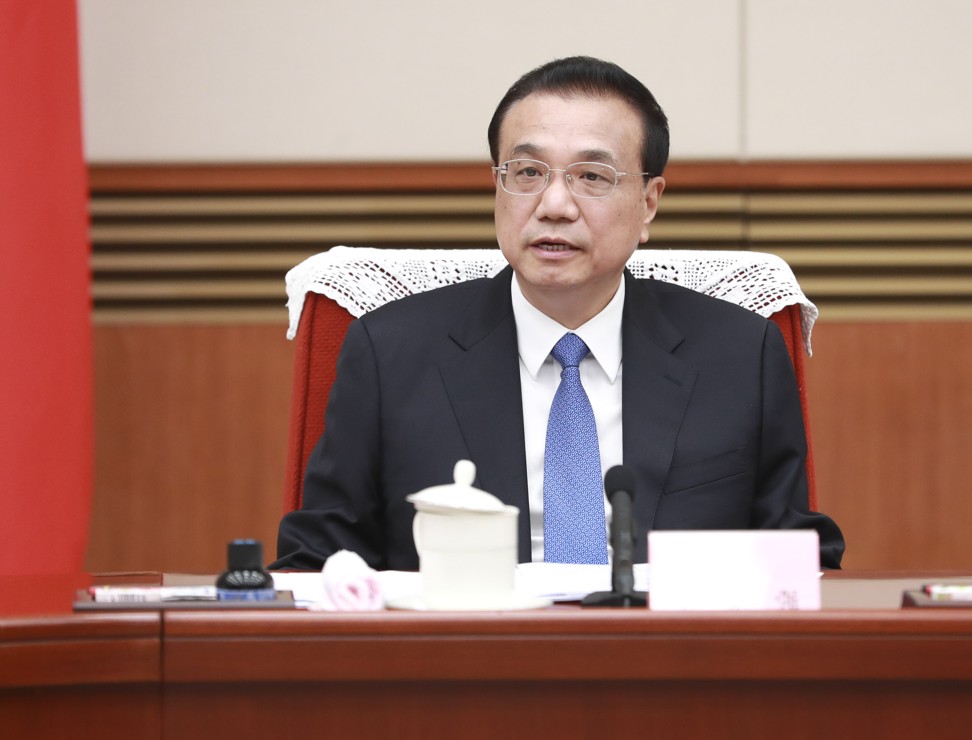
China’s latest efforts to focus on fine tuning ‘weak economic links’ as downward pressure mounts
- State Council calls for more subsidies for low-income consumers and more special purpose bonds to fund additional spending on infrastructure and other projects
- It also wants a timely cut in market interest rates and the amount of money that banks are required to hold in reserve at the central bank
China is continuing to push ahead with fine tuning policy rather than engaging in a large-scale easing even as analysts begin to revise down their expectations for growth next year amid the escalation of trade tensions with the United States.
The country’s cabinet, the State Council, on Wednesday ordered government agencies to more effectively use the countercyclical adjustment tools at their disposal. Specifically, it called for more subsidies for low-income consumers, more special purpose bond issuance to fund additional spending on infrastructure and other projects and a timely cut in market interest rates and the amount of money that banks are required to hold in reserve at the central bank.
“We need to focus on the weak links [in the economy] and expand effective investment,” said a statement released after the meeting chaired by Premier Li Keqiang.
“Also, we must fine-tune our monetary policies, accelerate the implementation of rate-cut measures, and deploy in a timely manner both a universal and a targeted cut of the required reserve ratio.”
We need to focus on the weak links [in the economy] and expand effective investment
Many private sector analysts are predicting that growth will slow below 6 per cent next year, with the US set to add new 15 per cent tariffs on around US$160 billion of Chinese imports in mid-December, meaning virtually all goods will be subject to levies by the end of the year.
To lift overall investment after growth fell to a historically low level of 5.7 per cent between January to July, the government has brought forward the 2020 quota for local government special bond issuance into this year to ensure the continuation of construction momentum with this year’s quota expected to be exhausted later this month.
In March, the national legislature approved a total of 3.08 trillion yuan (US$430 billion) in new local government bond issuance this year, including 2.15 trillion yuan of special purpose bonds. More than 2.55 trillion yuan, or 83 per cent, of this year’s quota had been issued by the end of July, with a dozen provincial level governments including the likes of Henan, Liaoning, Beijing, Shanghai, Fujian, Zhejiang and Guangdong having already used up all of their allocation for this year.

Given the increase in funding, the National Development and Reform Commission (NDRC) has also sped up the approval of new projects. The government’s economic planning agency said on Tuesday that it had approved the extension of the Fuzhou Changle International Airport in Fujian province at a cost of 21.2 billion yuan (US$3 billion).
Infrastructure construction, though, grew only 3.8 per cent in the first seven months of 2019.
Tang Linmin, a researcher with the China International Futures, said the special bond is now the most important tool to fund infrastructure construction and leverage the participation of social capital.
“Given that the effect of efforts to boost consumption have yet to fully show results and trade shocks remain huge, investment is the only tool that the government can control and rely on [to boost growth]”, Tang said.
Since local government special purpose bond issuance is not included in the calculation of the fiscal deficit ratio, which is subject to the approval of the National People’s Congress, the use of such bonds gives Beijing’s policymakers more flexibility in handling the slowdown of investment growth.
Wen Bin, chief macro analyst at China Minsheng Banking Corporation, said there could be a cut in the required reserve ratio for all banks by 50 basis points as well as an additional 50 basis point reduction for selected large banks in the short term, given the cabinet made such cuts an explicit requirement.
The monetary authority could also lower the interest rate on its medium-term lending facility (MLF), which it uses to inject liquidity into the banking system to boost lending, he added.
“There is still indeed a funding gap for infrastructure projects if China wants to stabilise economic growth at 6.0 to 6.2 per cent for the rest of the year,” said Wu Ge, chief economist at Changjiang Securities, last week, predicting a funding gap of more than 2 trillion yuan (US$280 billion) in the second half of 2019.
There is still indeed a funding gap for infrastructure projects if China wants to stabilise economic growth at 6.0 to 6.2 per cent for the rest of the year
“Broad fiscal spending has actually decreased if one considers the decline in shadow banking and non-standard investment. It partly explains low infrastructure construction despite an increase in local bond issuance.”
Despite the increase in the bond issuance limit for this year, many local governments still faces the restraint of debt caps, a key criteria in the country’s multi-year campaign to reduce debt and risky lending.
A deputy county magistrate in a western region, who asked to remain anonymous, said the provincial governments fiscal department allocates the proceeds of special bond issuance to local governments at the beginning of each year, but the allocation is based on the debt levels of the local governments.
The unnamed county only received 200 million yuan (US$30 million) from special bond issuance this year due to its debt cap, the official said. Instead, the county is now pinning its hopes on builders and local financing vehicles to raise more capital through market operations, although that is difficult in the current economic environment.

